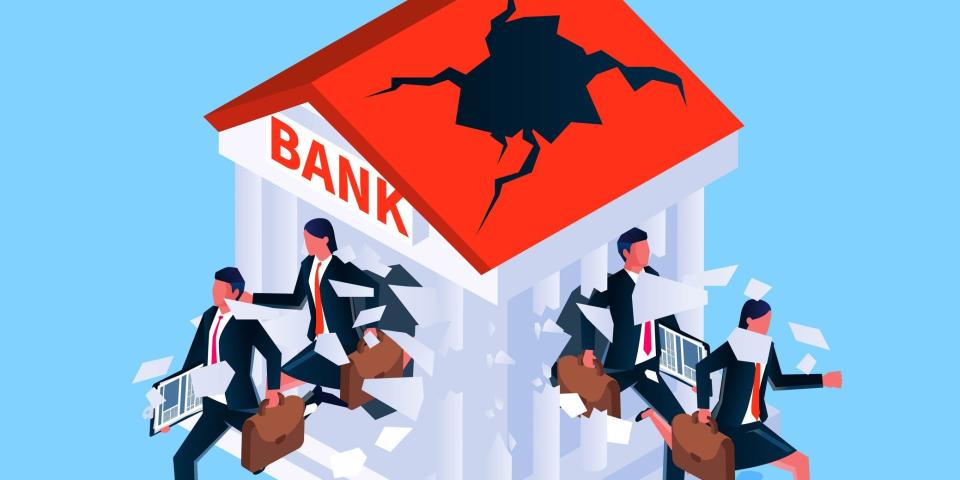Investors and economists are getting worried about more bank failures as interest rates stay high

Fears of a potential banking crisis are on the rise as interest rates stay elevated.
Interest rates are now at their highest levels since 2001 as the Fed keeps an eye on inflation.
Markets have already seen 1 regional bank fail this year, according to FDIC data.
Fears of more trouble in the banking sector are on the rise as investors and economists worry that high interest are causing trouble for regional lenders.
With interest rates at their highest levels since 2001, higher borrowing costs have put pressure on banks' balance sheets as borrowers struggle to pay debts or avoid the credit market altogether. According to Moody's Analytics chief economist Mark Zandi, the longer interest rates stay high, the more the Fed risks damaging the economy.
"Those rates are corrosive on the economy. They wear the economy down, and at some point, something could break," the economist told Yahoo Finance in a recent interview, pointing to the series of bank failures that rocked markets in early 2023. "That's the kind of thing I'm worried about in the context of persistently high interest rates."
High rates have started to impact credit conditions. Bank-financed loans and leases have stagnated over the last year, rising by $226 billion through 2023. That's a snail's pace compared to the prior year when banks tacked on $1.19 trillion in loans and leases.
Commercial bank loans in late payment rose sharply over the fourth quarter, with the delinquency rate rising to 1.4%, Fed data shows.
Economists are particularly worried about the commercial real estate industry, with nearly a trillion of debt in the sector set to mature by the end of this year. Those loans will likely have to be refinanced at higher rates, which could spark a wave of defaults and stress bank balance sheets.
Real estate investor Barry Sternlicht said he foresees one bank failure a week if the Fed doesn't lower interest rates soon.
"The 1.9 trillion of real estate loans, that's a fragile animal right now," Sternlicht said in a recent interview.
The US has only seen one bank fail so far this year, according to FDIC data. Regulators took over the Philadelphia-based Republic First Bank in April, before selling most of the deposits and assets to regional lender Fulton Bank.
"You have dozens of small regional banks in America that are exposed to real estate, are writing off loans, and the higher for longer phenomenon is having a direct impact on this second tier of the banking sector in America," Daniel Pinto, CEO of Stanhope Capital said in an interview with Bloomberg this week. "The Fed will very much be aware that if they keep rates at this high level, they may have another banking crisis on their hands."
Read the original article on Business Insider

 Yahoo Finance
Yahoo Finance 